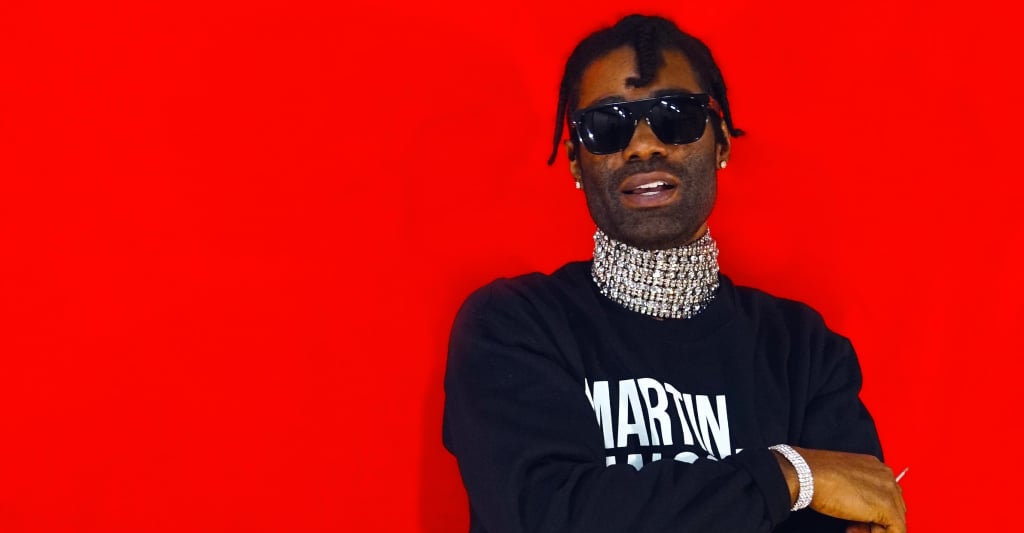
Bangladesh Talks His Legendary Career As Producer And His New Clothing Line
 7725
7725  76
76 Bangladesh is the architect of hip-hop and R&B’s biggest songs. Hailing from Des Moines, Iowa, and making his name in Atlanta, Bangladesh emerged as a formidable force in music production, crafting signature sounds that became the blueprint for chart-topping hits for artists like He has produced chart-topping hits for Beyoncé, Ludacris, Lil Wayne, and many more. His innovative but minimalist production style has not only defined eras but also cemented his legacy as a true architect of modern urban music.
HOT97 spoke to Bangladesh about his legendary career, his latest music project, and the launch of his clothing line.
HOT97:How was it growing up in Des Moines, Iowa?
Bangladesh: Growing up, I knew of two guys who made rap music. One was close to my family, and the other was older than me. His name was Corey D, and he made it on Rap City, and that was a big deal back then. But there wasn’t a rap scene because it wasn’t any outlets there. There wasn’t much going on as far as like culture, so we pulled from the West Coast and East Coast popping. We listened to E-40, Bone Thugs In Harmony, and anyone who was poppin at that time.
HOT97: I read that you were discovered as a producer when you were a barber.
Bangladesh: I had been cutting hair since I was 12, so by the time I was 15, I was making money doing it. In my senior year in high school, I was working in a barber I started saving up. Once I graduated from high school, I moved to Atlanta with my auntie, and she had a beautician license and her own shop. I saved my money up and bought myself an MPC 2000, and I just started making beats.
HOT97: How did you come up with the name “Bangladesh?”
Bangladesh: Bangladesh was a word that we used a couple of used. We used to use that word to describe cool stuff like “Oh, that’s Bangladesh. I named my company Bangladesh Records because I wanted to always be a record executive. I was working on a project with some of the artists that I had, and I started to do ad-libs on the songs, and I would say Bangladesh, Bangladesh, Bangladesh, a whole bunch of times, and I sampled it like my own voice. I started putting it in front of beats, and it became a producer tag.
HOT97: Eventually, you relocated to Atlanta, where the rap scene was just about to take off in a major way. How was it to see so many artists become stars?
Bangladesh: Rico Wade, who was 1/3 of organized noise, his sister went to school with me. All I wanted to do was move to Atlanta and be in the Dungeon Family, so imagine you going to high school with the leader’s sister. I just started meeting people at the school I went to, and my best friend is a cousin of Lil Fate, who is Ludacris’ right-hand man and his hype man even today. But back then, everybody was just rapping and had rap dreams. So knowing each other, and everybody being like-minded, we just came together, and it just organically happened for real.
HOT97: Your work with Ludacris helped to launch him into superstardom. When did you first connect with Luda?
Bangladesh: Me and Ludacris already knew each other. I was among a group of people that was doing music. So I think Chris was probably the last person that knew what I was doing, because he would come through, he would get his, you know, he had an afro, he would just get lineups. I took him to my car one day, and I played him, like four beats I had on a tape. The whole time, he was listening and looking through the front window. He never looked at me, never said a word. I could see him thinking, like, ‘Man, this, this dude got it like this?’ ‘Where did he come from?’ From there, we started working on “You’s a Ho*”, which is one of my first beats. That was the beat tape I played him, and “What’s Your Fantasy” was the last song we recorded.
HOT97: You also created “Diva” for Beyoncé. How was that creative process?
Bangladesh: I had “A Milli” with Lil Wayne, and when you have a smash out, everybody is open to whatever you’re doing. Everybody wants to work with you. It was just the perfect time to work on her project, coming off that a Millie song. I was working with Sean Garrett, who wrote “Diva”, um, so I had the beat already, but I didn’t take the beat seriously. It was a duplicate of “A Milli,” and I never tried to not remake things, and that was a mixtape track that I was working on with my artist. I was playing a beat in the studio one day, and my peers were going crazy. I kind of downplayed it, but I started looking at it different. When I got with Sean Garrett, he was always a fan of “A Milli.” He said, “If I had ‘A Milli, I would have killed it. When I was working on Beyoncé, I just pulled that beat out. She was the only top-tier female artist who could do a song like “Diva.” I already had the beat, and they put her voice on there. All we had to do was finish the job.
[embedded content]
HOT97: After all your success in music, you have entered the fashion world. What led you to this way?
Bangladesh: I’ve always been into fashion. I guess it’s in the blood. All my peers always get ideas of what to wear for me. Ever since I was in elementary and middle school, I have always come back from Christmas break and dress like me. They would tell their parents to get them the shirts and the pants like mine.
I always knew that’s kind of how I got into fashion because I saw the influence it has on everybody, and I needed to do something with this. I’m late to fashion. I should have been doing it. I’ve inspired a lot of people quietly. They might have a larger platform, so it looks like they did it first, but I know where they got it from. I just wanted to get into another field in life because of making something from nothing.


